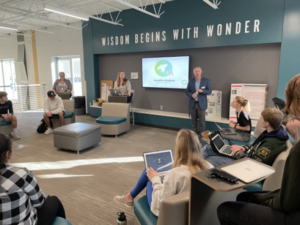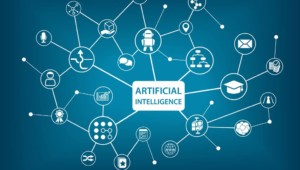Two Studies: Data, Implications, and Potential

By: Ellen Dorr
More and more preliminary studies point to the power of leveraging digital tools to complement teacher-led instruction, leading to more personalized learning and increased achievement for individual students.
These promising results mean that schools have the opportunity to more greatly impact student learning and are free to reconfigure their staffing and technology in order to increase productivity and impact. Two recent studies highlight some key findings in these areas that can help to inform further adoption of the systemic changes as well as practical considerations needed to effectively employ these strategies.
A recent study by the Center for Reinventing Public Education (CRPE) at the University of Washington, found that a several financial realities can have impacts on implementation.The study, which took place over the course of two years, focused on resource allocation, management of new technology costs, and financial sustainability. Difficulty in enrollment forecasting appeared to undermine implementation in the study of eight new personalized-learning charter schools.
The study shows that as a result of missed enrollment and revenue projections:
- Schools reverted to more traditional spending patterns, spending less on technology and more on personnel than planned: instead of a combined $1.7 million on tech in the early stages, they spent just $650,000
- Student-to-computer ratios were higher and schools spent less than planned on instructional and performance reporting software
- Projected budget deficits in five of the schools threaten their ability to sustain on public funding
Some schools found that changing manufacturers allowed for significant savings, which allowed budgets to align more closely with sustainability. Implications and recommendations from these results include increasing student enrollment efforts, developing budgets with funding at 20-25% below target, and managing product contracts with trial periods to ensure appropriate fits. In essence, setting a high target and a low budget means that schools would be more likely to hit their marks.
The recently published Blended Learning Report from the Michael & Susan Dell Foundation (MSDF), in partnership with SRI International,provides a robust analysis of programs at several schools:
- Alliance College-Ready Public Schools
- FirstLine Schools
- KIPP LA
- Rocketship Education
- Summit Public Schools
The study was motivated by the following research questions:
- Do students in blended learning models show changes in academic achievement that differ significantly from their peers’?
- Do students in blended learning models show a propensity to close the achievement gap?
- Are differences in the way that blended learning models are implemented associated with differences in learning outcomes?
- Are blended learning models more effective for some types of students or subject areas than for others?
- To what extent is each of the blended learning models being implemented as intended?
Findings range among the schools, half of whom are in the first year of implementing blended learning programs. All schools used “rotation” models and the results provide a formative evaluation of the implementation of these models with a variety of metrics for evaluating impact. By allowing for a range of metrics, the study was able to identify multiple issues and solutions. The findings reported are related to issues with infrastructure and technology (specifically issues with bandwidth, connectivity, and programs), perceived benefits to teaching and learning, and student productivity. Not surprisingly, the study reveals many specific needs in choosing the best software, which would be echoed by any classroom practitioner. Programs need to align with Common Core standards, be not only interactive and engaging but adaptive as well, allow for assignment by the teacher, allow for integration with a school LMS, and are cloud based and affordable. Most importantly, there is a need for valid reports of student learning, because the student data must to be accurate and actionable for it be valuable and push both teaching and learning in service of student growth. Though every moving piece in the puzzle matters, the absence of this one results in a huge hole in the middle.
Overall implications suggest that on-site technical support could remedy technical issues and improve usability. Strong management systems can ensure that student productivity is enhanced and improved. Also, providing a productive culture by using goal setting with students can promote self-directed learning. Selected programs need to provide data to inform instruction which can lead to better personalization and improved instruction for students with the greatest need. Again, it pays to be clear and incredibly strategic as well as endlessly flexible in this work.
Using these findings can help schools to implement and refine models to ensure maximization in order to improve student learning opportunities. The power and potential of personal digital learning lies in correctly harnessing the powers of the these tools to inform and enhance face-to-face instruction. By planning well and budgeting smartly, creating effective systems, and being really purposeful about which tools to use and how to use them, implementation will be more effective and have a great resulting impact on student achievement, by any metrics.
Ellen has worked in education for the past decade as an English/Language Arts teacher and has served in various leadership positions, including working as the Blended Learning Specialist for a low-income, high-diversity middle school.







0 Comments
Leave a Comment
Your email address will not be published. All fields are required.